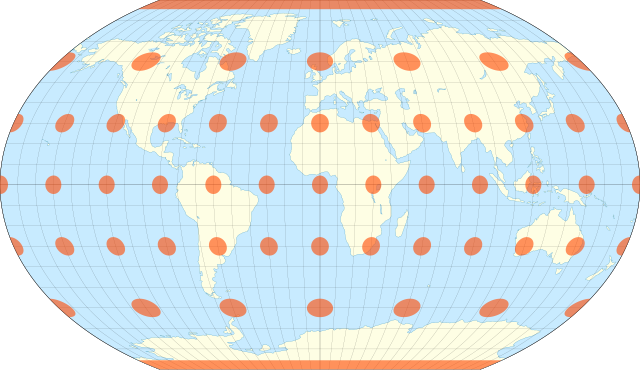Top Qs
Timeline
Chat
Perspective
Kavrayskiy VII projection
Pseudocylindrical compromise map projection From Wikipedia, the free encyclopedia
Remove ads
The Kavrayskiy VII projection is a map projection invented by Soviet cartographer Vladimir V. Kavrayskiy in 1939[1] for use as a general-purpose pseudocylindrical projection. Like the Robinson projection, it is a compromise intended to produce good-quality maps with low distortion overall. It scores well in that respect compared to other popular projections, such as the Winkel tripel,[2][3] despite straight, evenly spaced parallels and a simple formulation. Regardless, it has not been widely used outside the former Soviet Union.[3]


The projection is defined as
where is the longitude, and is the latitude in radians.
The inverse would then be
Remove ads
See also
References
External links
Wikiwand - on
Seamless Wikipedia browsing. On steroids.
Remove ads




